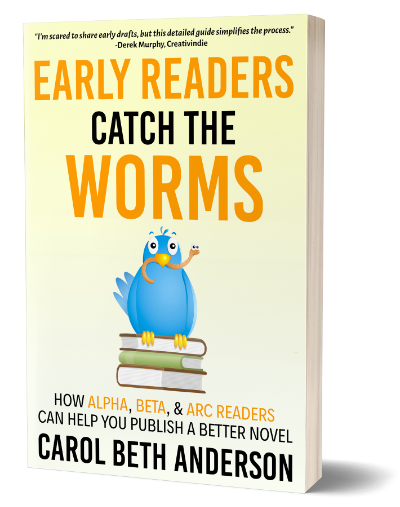This is Part 2 of a series for indie authors.
To read the series intro, click here.
To read Part 1: ALPHA READERS, click here.
How many beta readers should you have? Some people say one or two; others say as many as you can get!
I used to be in the latter camp, but when I had over twenty beta readers for one book, I did find it a bit overwhelming. I think twenty is probably my max, but you’ll have to figure out what works for you.
I got a lot of inspiration for my beta reading system from one of my favorite authors, Michael J. Sullivan, and his wife Robin. Robin runs an amazing beta team for Michael. I’m not on that team, but in Michael’s newsletter, they’ve been kind enough to share how their beta reading process works.

Let’s jump in!
Here’s are two keys to a successful beta reading round:
- Provide betas with a manuscript that, while imperfect, is already in good reading condition. Typos, grammar issues, and plot issues will exist, but they shouldn’t be so egregious that your beta readers don’t even want to finish the book!
- Communicate, communicate, communicate. Then communicate some more. People are busy. You’ve got to help them remember their commitment to beta read, and give them enough guidance to do so successfully!
Where can I find betas?
As with alpha readers, I started with people I knew! Sure, they weren’t all fans of the genre, but they were people willing to read my work. You gotta start somewhere!
- I started a newsletter (mostly friends and family from Facebook) and asked my subscribers to apply as beta readers.
- I asked on my personal Facebook page.
- I started a Facebook author page (again, mostly friends and family) and asked there.
- Once I’d been through this process on one book, I sent special requests to former betas to repeat their roles.
- I’ve also invited people on Twitter to apply as beta readers.
- When I request beta readers, I’m very specific, telling them about the book, how long they’ll have to give feedback, etc..
How my beta-reading process works:
- Prospective beta readers fill out a beta reader application.
- Just filling out the application shows a certain level of commitment! So when I first started writing, I accepted everyone who filled out the application. Eventually, I reached the point where I became selective. Now, I choose approximately 20 to 25 betas. That’s more than many people use, and you may prefer fewer.
- Even if I communicate very well with beta readers, I’ve never had 100% follow through. Life happens!
- When working with an entirely new group of beta readers, you can reasonably expect at least 50% follow through (betas who read part or all of the book and provide feedback) if you communicate very well with them.
- My highest-ever follow through has been 93%! This number was high because I had so many returning betas, and they were more likely to follow through than betas I’d never worked with before.
- Once I’ve chosen my beta team and the book is ready, I send each of them an intro e-mail. I’m very clear on their deadlines (usually four weeks for a novel and at least two weeks for a novella) and what I’m looking for. Here’s my intro email for Birth of Magic:
- I give beta readers a feedback form with questions that will help guide my revisions. It’s so helpful to them and to me.
How I decide which feedback to incorporate:
- First, I go with my gut. Does the feedback feel right? If it does, I change it.
- If more than one person has the same feedback, I might change it, even if it didn’t initially strike me as necessary
- And of course I change grammar errors, typos, etc. that my betas find!
Once you’ve made revisions based on beta feedback, it’s time for final polishing. That might involve a professional editor and/or proofreader, or an additional read-through by you, the author, or even another beta round…whatever you need to get your book ready for ARC reviewers.
Want more step-by-step instructions and resources that will help you create a successful beta reader team? My new book, Early Readers Catch the Worms, includes…
- Access to a Resource Pack full of editable resources and templates to help you build early reader teams (including the beta-invitation email, beta application, welcome email to betas, feedback form, and follow-up email).
- Suggestions for how to improve beta follow-through.
Buy your copy of Early Readers Catch the Worms: How Alpha, Beta, & ARC Readers Can Help You Publish a Better Novel by clicking here!

Click here for Part 3 of this series: ARC reviewers.
Want to be notified every time I post an Author Resource?
Author Resources on my website are 100% free. But if you’d like to buy me a coffee to thank me, click the “Tip Me” button below!
